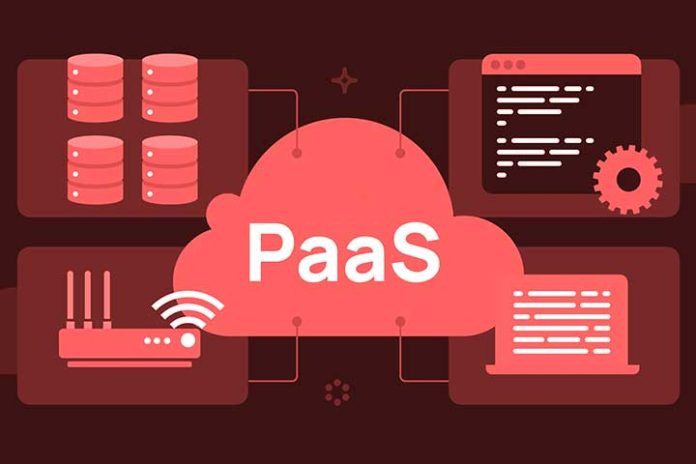PaaS is an acronym for “platform as a service” and refers to a web service that a provider provides to a customer in a digital environment.
The said environment can fulfil various functions, depending on the purpose you want to give it.
They mainly provide the developer or buyer with all the resources for developing new web applications.
But then, why not make them themselves? To begin with, that way, they can take care of the Infrastructure themselves.
But before we go into more detail, let’s talk in depth about what a PaaS or “Platform as a Service” is and how you can use one to your advantage.
What is the function of a PaaS?
There are two terms you should know before you start talking about what PaaS is: SaaS and IaaS.
SaaS stands for Software as a Service, while IaaS stands for Infrastructure.
These are two digital tools that can help companies automate their processes. PaaS is the middle ground, the connection between a SaaS and an IaaS.
The first is responsible for providing a web application for a company, although the application and everything related to it belong to the provider.
On the other hand, an IaaS service only provides the Infrastructure, that is, the environment in which other companies will create their projects or display their products.
A PaaS does both and even more, giving the buyer the structure and everything they need to get started.
Develop, test, and present the product to its users to facilitate otherwise expensive and tedious processes.
How do they work?
These systems contain everything related to the digital platform you will use, the Infrastructure.
Added to this is everything you need to bring your project to life as such, that is, programming languages and other tools.
These aim to allow organizations to develop and distribute new web applications easily, quickly, efficiently, and cheaply.
This will allow you to focus as much as possible on the development and creation of your applications and the service you offer your customers.
How does it work?
Imagine that all the tools you would have to create previously to start designing your own application were already done. That is a PaaS.
In addition, they allow you to test your applications several times in controlled environments to ensure their proper functioning.
A clear example is web pages that allow you to create web pages. Although you create the code, the page is responsible for displaying the information on the screen.
This generates many advantages, such as not worrying about installations or the space on your hard drive: everything is stored in the cloud.
Of course, there is much more to it than web page support—next, a short review of the types of PaaS that you can find there.
Guys
It is difficult to group these platforms into defined types since they are varied and serve very different purposes.
Each one is better suited to a certain purpose, and they are dedicated solely to it, adapting to the needs of consumers.
Even so, like everything, it has similarities that allow us to group them into broad categories, which we will briefly mention.
The first difference lies in the APaaS, or “Applications Platforms as a Service,” and the iPaaS, or “Integration Platforms as a Service.”
The first is a type of software ready to be used by a third party, that is, for those who do not wish to create their tools from scratch.
iPaaS, on the other hand, is cloud-centric and sediments all its tools.
There are also those called open PaaS. The most famous is Google App Engine, which allows users to create applications and work in an open-source environment.
This allows the user greater freedom since these platforms do not usually have defined things such as programming languages or operating systems.
It can also be the case of a platform as a service that is used for communication.
In these cases, the name “cPaas” or “Communication Platforms as a Service” is used.
Advantages and disadvantages
The main advantage is that development is greatly streamlined and facilitated for the developer without the need to purchase and manage their Infrastructure.
This way, you can generate many more resources and sales in less time and less effort. This is not to mention performance scaling.
Many PaaS give the option to increase or decrease the number of resources to be used, thus decreasing or increasing the fee to pay.
This allows the buyer to pay only for what is needed throughout the development, saving costs.
In addition, you will be able to save the costs for updates or for the maintenance of the platform itself since those are things that the service provider will take care of.
Also, you are limited to the programming languages and tools the provider adds to their platform.
Another fact that it is better that you consider when choosing this type of platform is that you pay attention to whether the chosen PaaS adapts to the project you want to carry out.
Mainly because if you have a small project in mind that only needs a few resources, you should opt for a more modest system.
Also, remember that if you move to another platform with smaller code, you may need to rewrite some parts.
Conclusion
As you may have noticed, this is incredibly useful for creating other derivative services, such as web pages.
In any case, it is always up to you to choose what use you will give it. You may need something simple or be looking for something that gives you more tools and options.
Everything is in that you investigate on your own now that you know in depth what these technologies suppose and find one that suits your needs and ideas.
Also Read: Five Types Of Technology That Can Improve The Results Of Your Company

